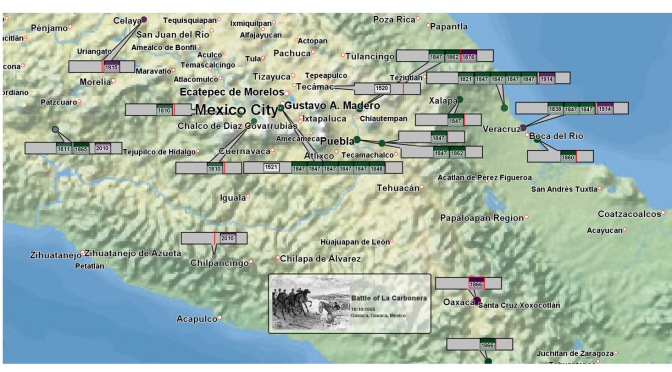In our ECCE2012 paper “A Situated Cognition Aware Approach to the Design of Information Retrieval Systems for Geospatial Data” we describe a situated cognition aware approach to the design of information retrieval systems for geospatial data using the example of a system for events in Mexican history. This began with a requirements analysis exercise focused on identifying the actions that users want to realize with their data and context that is important for those actions. In the case of our search system for events in Mexican history, we discovered that users wanted to search for events and explore results within the context of town and city place-names. The next step was to develop a system that supported the process of situated cognition by allowing the user to realize these actions with the relevant context. In our case this application took the form of the Mexican history browser which ensures that place-names remain visible at all times (without being overlapped or removed) and allows the user to move around the map repositioning result labels when required using animation to smooth the transition between views. A user evaluation of the new design showed significant improvements in usability over existing techniques. Allowing users to explore the map helped them to discover unsuspected patterns of events and discover geographically related events. Maintaining the visibility of town/city place-names provided essential geographic context for results helping users to relate results to known places and existing knowledge.
This application is still being developed with more results to follow…
Publications
Craig, P., Roa-Seiler, N., Leplâtre, G., “A Situated Cognition Aware Approach to the Design of Information Retrieval Systems for Geospatial Data ” in European Conference on Cognitive Ergonomics, Edinburgh, UK, 2012.
Craig_Seiler_Leplatre_ECCE2012 (final version)
